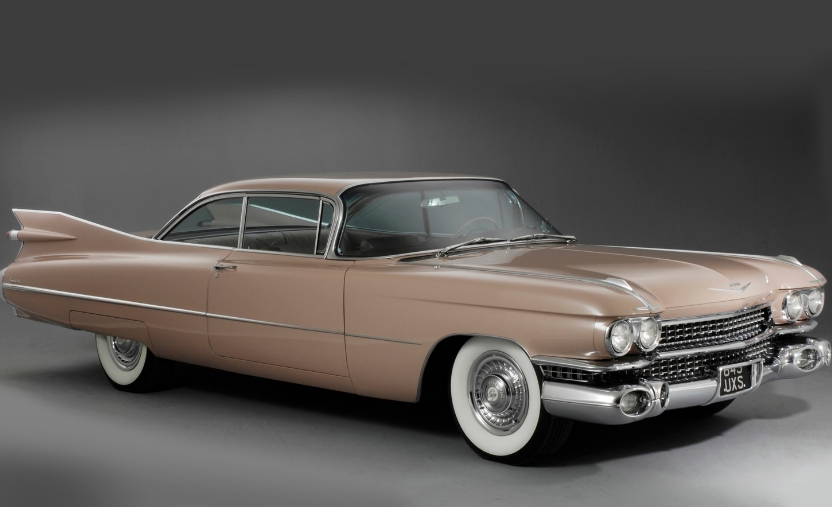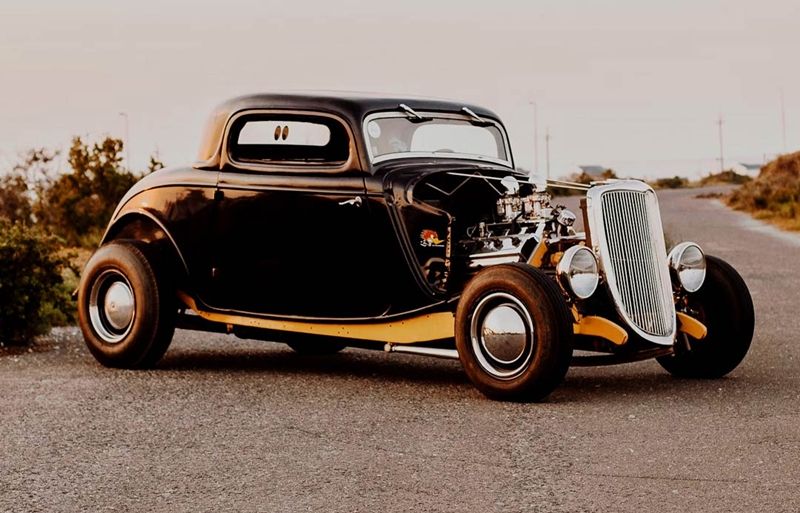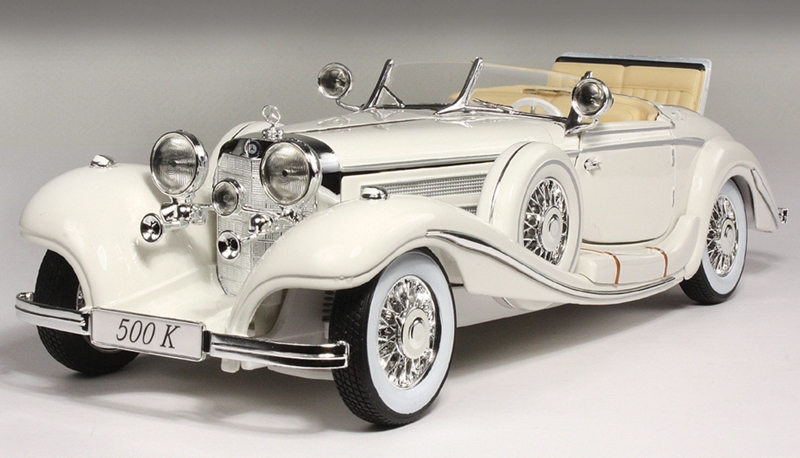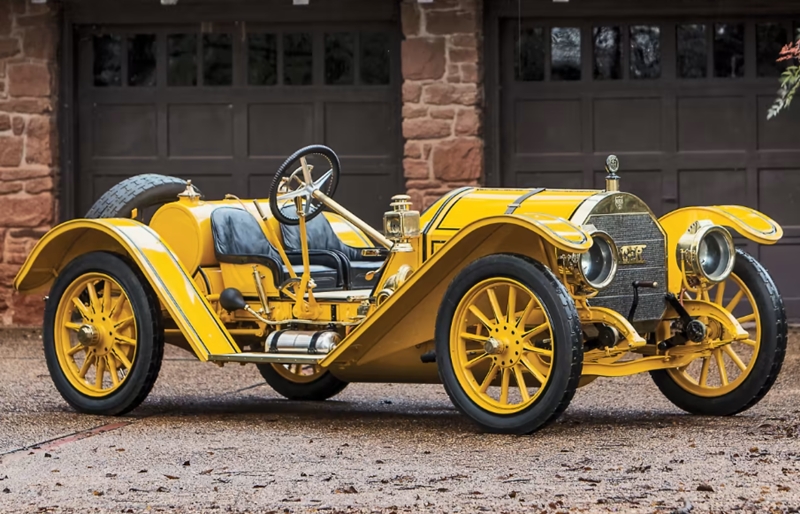Picture this: it’s 1955, and you’re cruising down a freshly paved highway in your brand-new Chevrolet Bel Air, the radio playing the latest rock and roll hits while chrome bumpers gleam in the afternoon sun. This wasn’t just transportation—this was 1950s American car culture in full swing: freedom, status, and the American Dream rolled into one gorgeous, gas-guzzling package.
Downloadable Resources
The 1950s American car culture didn’t just change how people got from point A to point B; it revolutionized the entire fabric of American society. From suburban sprawl to teenage romance, from economic prosperity to social hierarchies, automobiles became the beating heart of post-war America. Let’s take a nostalgic ride through the decade that put America on wheels and discover how 1950s American automotive culture shaped the nation we know today.
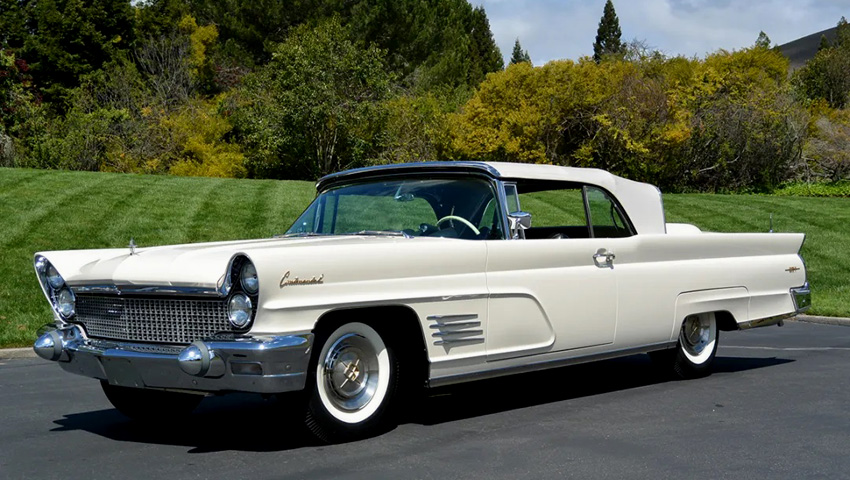
Also read: 7 Amazing Hot Rod History Secrets That Will Blow Your Mind
Table of Contents
The 7 Revolutionary Ways 1950s America Car Culture Transformed Society
1. Economic Transformation
- Created the middle class through automotive industry jobs
- 1 in 7 Americans worked in auto-related industries
- Established modern consumer credit systems through car loans
- Generated massive economic ripple effects across multiple industries
2. Suburban Revolution
- Enabled the massive suburban sprawl that defines American cities today
- Made it possible to live far from work while maintaining economic connections
- Created car-centric infrastructure (wide roads, shopping malls, drive-throughs)
- Fundamentally reshaped American geography and living patterns
3. Drive-In Culture Creation
- Revolutionized entertainment with 4,000+ drive-in theaters at peak
- Created drive-through services (restaurants, banks, even churches)
- Transformed cars into mobile living rooms and social spaces
- Established convenience-oriented lifestyle that persists today
4. Teenage Independence Liberation
- Gave teenagers unprecedented freedom from parental supervision
- Created youth culture centered around cruising, dating, and car ownership
- Enabled the development of hot rod and drag racing subcultures
- Fundamentally changed parent-child relationships and family dynamics
5. Design and Status Revolution
- Transformed cars from transportation into personal identity statements
- Created the “bigger, flashier, more chrome” design philosophy
- Established automobiles as status symbols and expressions of success
- Influenced fashion, architecture, and consumer goods design
6. Social and Cultural Integration
- Connected cars with rock and roll music culture
- Created shared national experiences through car radio
- Established automotive enthusiasm as a major American pastime
- Integrated cars into romance, leisure, and social activities
7. Infrastructure and Lifestyle Transformation
- Sparked the Interstate Highway System (largest public works project ever)
- Created the foundation for modern American transportation networks
- Established car dependency as the American way of life
- Transformed shopping, working, and recreation patterns permanently
These seven ways show how 1950s American automotive culture didn’t just change transportation—it revolutionized virtually every aspect of American society, from economics and geography to social relationships and cultural identity. The effects of this transformation are still visible and influential in American life today.
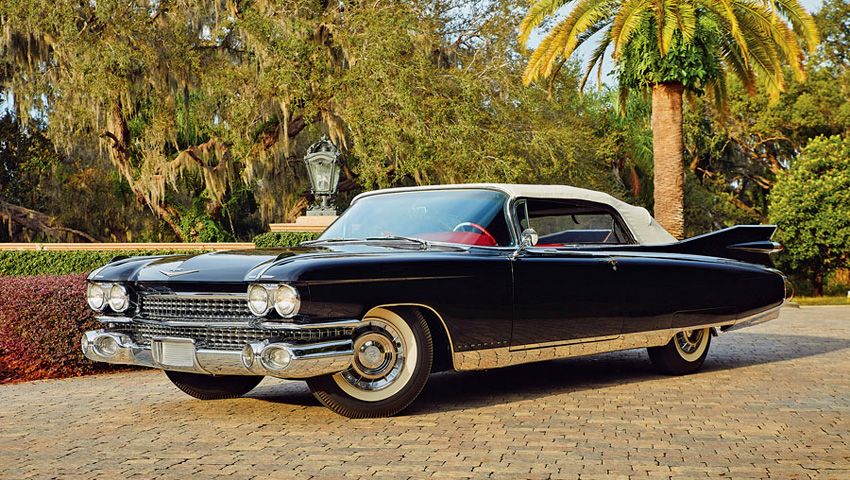
The Post-War Automotive Boom: When America Hit the Gas
Coming out of World War II, America was ready to trade in wartime rationing for peacetime prosperity. The decade began with 25 million cars already on American roads, but by 1950, factories had made the transition to a consumer-based economy, producing more than 8 million cars that year alone. This wasn’t just about meeting demand—it was the beginning of 1950s American car culture, a movement that redefined the nation’s lifestyle.
The numbers tell an incredible story of growth. Almost 58 million cars were produced and sold during the 1950s by American manufacturers, compared to a total U.S. population of 179 million by decade’s end. That’s roughly one car for every three Americans! This level of saturation cemented the foundation of 1950s American automotive culture, where car ownership was both a norm and a national symbol. Approximately one out of every seven Americans owed their job directly or indirectly to the automobile industry, making cars not just a luxury but an economic necessity.
The automotive industry became America’s economic engine, driving growth in steel, glass, rubber, and petroleum sectors. Auto manufacturers like General Motors, Ford, and Chrysler weren’t just building cars—they were building the American middle class, one paycheck at a time. These companies fueled the rise of 1950s American car culture, turning automobiles into everyday essentials and emblems of success.
But what made 1950s American automotive culture so special wasn’t just the quantity of vehicles produced; it was the revolutionary designs that captured the nation’s imagination. Chrome-laden beauties with soaring tail fins and powerful V8 engines became symbols of American optimism and technological prowess.

Chrome Dreams and Tail Fin Fantasies: The Design Revolution
When you think of 1950s automobiles, what comes to mind? Probably those gorgeous, gleaming machines that looked like they belonged in a space-age cartoon. The decade’s automotive design philosophy was simple: bigger, flashier, and more futuristic was always better—a perfect reflection of 1950s American car culture.
Cars became symbols of freedom and prosperity, with designs emphasizing chrome accents, tailfins, and powerful V8 engines. Designers drew inspiration from everything—jet aircraft, rockets, and even kitchen appliances—to create vehicles that screamed “future” from every angle. This bold, forward-looking design became a defining feature of 1950s American automotive culture.
The 1957 Chevrolet Bel Air remains the poster child of 1950s American car culture. If you ask someone who loves classic cars what their favorite car is, 8 times out of 10 they’ll say ’57 Chevy. With its distinctive tail fins, two-tone paint schemes, and enough chrome to blind a pilot, the Bel Air epitomized everything Americans loved about their cars: style, power, and pure showmanship.
But it wasn’t just Chevrolet making waves. Ford’s Thunderbird, introduced in 1955, created the personal luxury car segment. Cadillac pushed tail fins to absurd heights, while Chrysler experimented with “Forward Look” styling that made their cars appear to be zooming forward even when parked—hallmarks of the excess and innovation that characterized 1950s American car culture.
These weren’t just transportation devices—they were rolling sculptures, mobile status symbols that announced to the world that their owners had arrived. The more chrome, the bigger the engine, the longer the car, the better. Practicality took a back seat to personality, and 1950s American car culture ensured that Americans wouldn’t have it any other way.
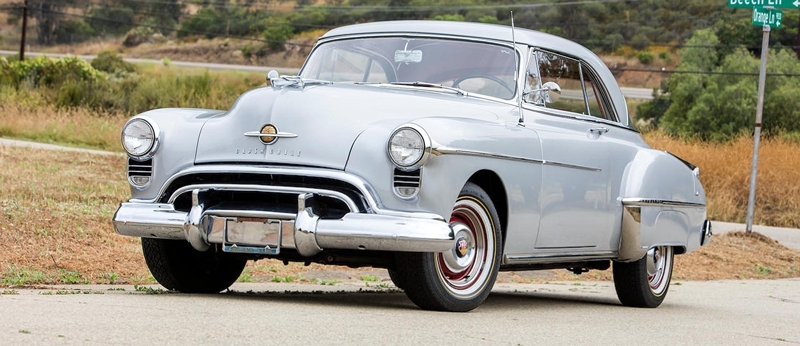
Drive-In Culture: Where Cars Became Living Rooms
Perhaps no aspect of 1950s American car culture was more revolutionary than the rise of drive-in everything. If you had a car, you could live your entire life without leaving the driver’s seat—and many Americans did exactly that.
By 1951, drive-in movie theaters had increased from 155 in 1947 to 4,151 across the United States. At their peak in the late 1950s, there were over 4,000 drive-ins throughout the U.S., becoming an icon of American culture and a typical weekend destination for families and teenage couples alike.
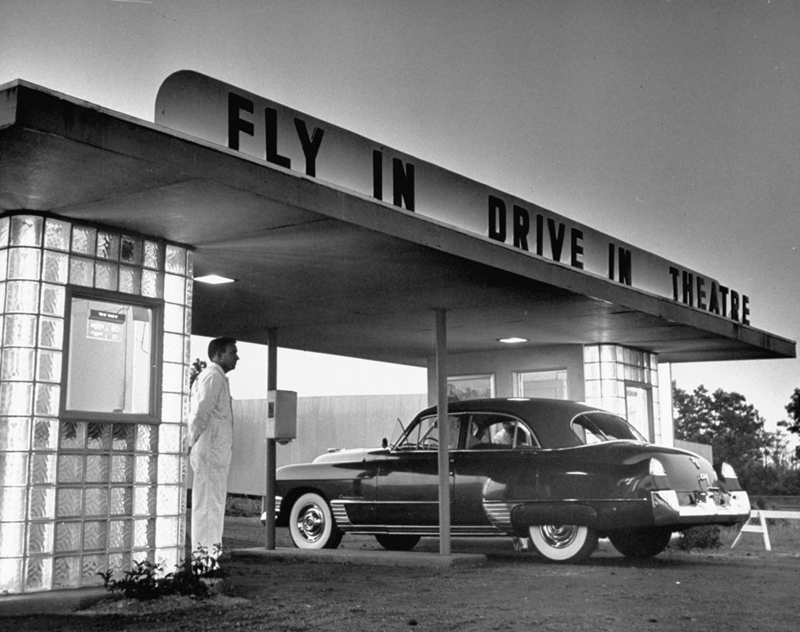
Drive-in theaters weren’t just about watching movies—they were about experiencing entertainment in a completely new way. Families could load up the station wagon with blankets, snacks, and kids in pajamas for a night under the stars. Teenagers found them perfect for dates, offering privacy and romance that traditional theaters couldn’t match.
But the drive-in phenomenon extended far beyond movies. Drive-in restaurants, banks, and even churches popped up across the country. The car became America’s mobile living room, office, and dining room all rolled into one. This shift fundamentally changed how Americans thought about space, convenience, and social interaction.
The drive-in culture of 1950s American car culture represented something deeper than convenience—it was about freedom and flexibility. Americans could maintain their independence while still participating in social activities, a perfect match for the individualistic spirit that defined the decade.
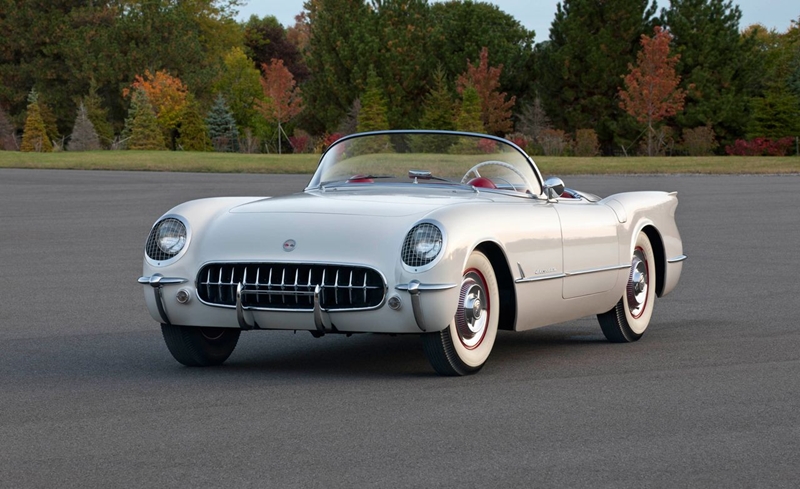
Teenage Romance and Rock ‘n’ Roll: Cars as Cupid’s Chariot
Nothing captures the essence of 1950s American car culture quite like the image of teenagers cruising Main Street on a Saturday night, rock and roll blasting from the radio, looking for adventure and romance. Cars didn’t just transport teenagers—they liberated them.
The 1950s American car culture was marked by mobility, changing mores, and rock and roll music. Cars and music were intertwined, with entertainers crooning about their cars, and cars announcing to the world that the entertainers had achieved success.
For the first time in American history, teenagers had mobility independent of their parents. A car meant freedom to date without chaperones, to hang out at the local drive-in, to cruise the strip with friends, and to express individuality through automotive choices. The family car became the teenager’s ticket to independence, fundamentally changing parent-child relationships and youth culture.
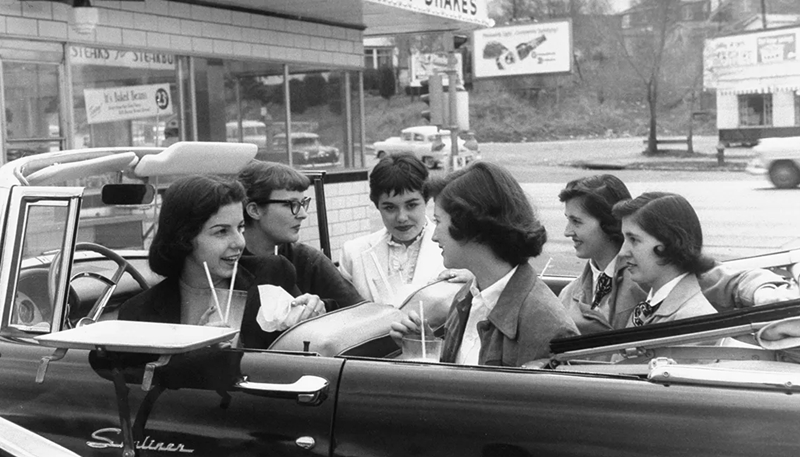
Rock and roll music perfectly complemented this automotive revolution. Songs like “Rocket 88” celebrated the power and excitement of cars, while countless ballads were written about young love and late-night drives. The car radio became the soundtrack to teenage life, creating shared cultural experiences across the country.
Hot rod culture emerged as young men began modifying their cars for performance and style. Drag racing became a popular weekend activity, with teenagers gathering at abandoned airstrips and empty roads to test their mechanical skills and automotive prowess. This DIY culture fostered innovation and creativity, laying the groundwork for America’s later muscle car era.
The Economic Engine: How Cars Built Middle-Class America
The impact of 1950s American car culture on the American economy cannot be overstated. The automobile industry became the backbone of post-war prosperity, creating jobs not just in manufacturing but across dozens of related industries.
Auto plants provided good-paying union jobs that allowed working-class families to achieve middle-class lifestyles. Workers could afford not just one car but often two—one for Dad to drive to work and a family car for Mom’s errands and weekend trips. This dual-car household became a hallmark of 1950s American car culture, symbolizing prosperity and upward mobility.

The ripple effects extended far beyond Detroit’s assembly lines. Gas stations, repair shops, parts suppliers, insurance companies, and car dealerships sprouted across the country. These industries thrived thanks to 1950s American car culture, which created a national demand for car-related goods and services. New suburbs required new roads, new shopping centers, and new services—all designed around automobile access.
Consumer credit expanded dramatically to help families finance their automotive dreams. Car loans became commonplace, introducing millions of Americans to installment buying and creating the foundation for the modern consumer credit system. This financial shift was deeply tied to 1950s American car culture, where owning a car—or two—was no longer a luxury, but an expected part of the American lifestyle.
Even fashion and architecture reflected the influence of 1950s American car culture. Clothing designers created “car coats” specifically for driving, while architects designed homes with attached garages and driveways, recognizing that cars were becoming permanent family members.
Suburban Dreams: How Cars Reshaped the American Landscape
The 1950s saw the construction of the interstate highway system, the largest public works program in American history. This massive infrastructure investment, combined with the explosion in car ownership, was a hallmark of 1950s American car culture and fundamentally reshaped where and how Americans lived.
The suburbs became possible because of cars. Families could live miles from city centers while still commuting to work, shop at new suburban shopping centers, and maintain connections with urban amenities. This transformation was driven by 1950s American car culture, which prioritized mobility, independence, and convenience.

New suburban developments were designed entirely around automobile access. Wide streets, large driveways, attached garages, and minimal pedestrian infrastructure reflected the assumption that every family would own at least one car. These planning choices were a direct response to the norms and expectations of 1950s American car culture, which made the car central to daily life.
Shopping patterns changed dramatically as well. Downtown department stores gave way to suburban shopping centers with vast parking lots. The mall became America’s new town square, accessible only by automobile and designed to accommodate hundreds of cars. Drive-through services proliferated, another innovation rooted in 1950s American car culture, allowing Americans to bank, eat, and even attend church without leaving their vehicles.
This geographic transformation had profound social implications. The automobile enabled racial and economic segregation by allowing white middle-class families to move to all-white suburbs while maintaining economic connections to increasingly diverse urban areas. 1950s American car culture thus played a complex role in shaping America’s racial and economic landscape.
Charts and Data: The Numbers Behind the Revolution
Car Production Growth (1950-1959)
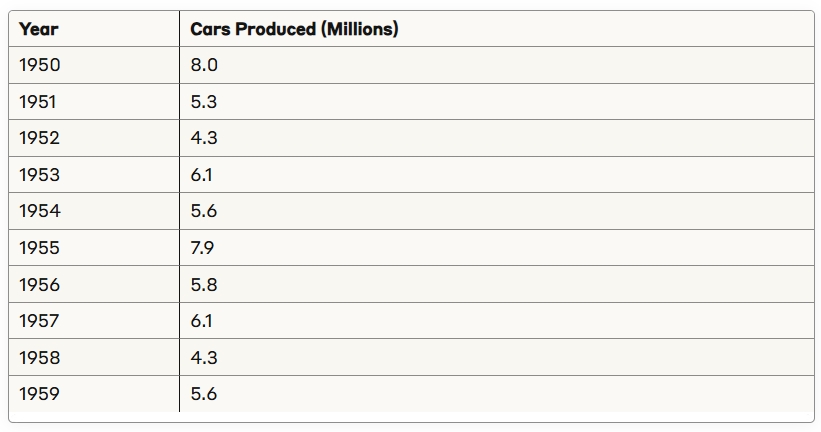
Drive-In Theater Growth
- 1947: 155 theaters
- 1951: 4,151 theaters
- 1958: Over 4,000 theaters (peak)
Economic Impact Statistics
- 1 in 7 Americans worked in auto-related jobs
- 58 million cars produced during the decade
- 67 million cars on roads by 1959
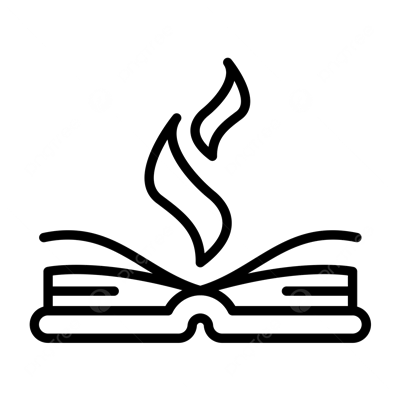
1950s American Car Culture Facts & Myths
Myth: Only wealthy families could afford cars in the 1950s
Fact: Car ownership became increasingly accessible to middle-class families thanks to expanded consumer credit and competitive pricing. By 1959, most American families owned at least one automobile.
Myth: 1950s cars were more reliable than modern vehicles
Fact: While stylish and powerful, 1950s cars required frequent maintenance and had much shorter lifespans than today’s vehicles. Regular tune-ups every 5,000 miles were standard.
Myth: Gas was incredibly cheap in the 1950s
Fact: While gas cost only about 25-30 cents per gallon, this represented a larger percentage of family income than gas costs today when adjusted for inflation.
Myth: All 1950s cars had huge engines
Fact: While V8 engines were popular, many economy cars featured smaller 6-cylinder engines. Not every car was a chrome-laden behemoth.
Myth: Drive-in theaters were just for teenagers
Fact: Families with young children were actually the primary audience for drive-ins, as parents could bring kids in pajamas and not worry about disturbing other moviegoers.
Myth: 1950s car culture was the same nationwide
Fact: Car culture varied significantly by region, with California leading in hot rod culture, the South embracing pickup trucks, and the Northeast maintaining stronger public transportation systems.

Frequently Asked Questions
What made 1950s American car culture so different from previous decades?
The combination of post-war prosperity, expanded consumer credit, mass production techniques, and revolutionary automotive designs created an unprecedented cultural phenomenon. Cars transitioned from luxury items to necessities and symbols of personal identity.
Which car best represents 1950s American car culture?
The 1957 Chevrolet Bel Air is widely considered the quintessential 1950s car, featuring iconic tail fins, chrome accents, and powerful V8 engine options that epitomized the decade’s automotive aesthetic.
How did car ownership rates change during the 1950s?
Car ownership exploded during the decade, with nearly 58 million vehicles produced and sold. By 1959, there were 67 million cars on American roads serving a population of 179 million people. This boom in ownership was a defining aspect of 1950s American car culture, symbolizing freedom, prosperity, and status.
What role did cars play in teenage culture during the 1950s?
Cars gave teenagers unprecedented independence and privacy, enabling unsupervised dating, cruising culture, and the development of hot rod and drag racing subcultures. These activities were central to 1950s American car culture, shaping youth identity and influencing fashion, music, and language.
How did drive-in culture change American social life?
Drive-ins transformed entertainment and dining by allowing families to maintain privacy and comfort while participating in social activities. These venues became icons of 1950s American car culture, reflecting broader American values of individualism and convenience.
What economic impact did 1950s car culture have?
The automotive industry employed one in seven Americans and sparked growth in related industries including steel, glass, rubber, petroleum, and consumer credit. 1950s American car culture helped build the American middle class, making the car both a tool and a symbol of economic mobility.
How did cars influence suburban development?
Cars made suburban living possible by allowing families to live far from city centers while maintaining economic connections. This shift, a cornerstone of 1950s American car culture, led to massive suburban development and the rise of highways, shopping malls, and drive-thrus.
Were 1950s cars actually better than modern cars?
While 1950s cars had distinctive style and powerful engines, they were less reliable, less fuel-efficient, and significantly less safe than modern vehicles. Nonetheless, their bold design and cultural impact make them icons of 1950s American car culture, treasured by collectors and enthusiasts today.
The Lasting Legacy: How 1950s Car Culture Still Influences America Today
The impact of 1950s American car culture extends far beyond the decade itself. The suburban infrastructure built during this era still defines American metropolitan areas. The credit systems developed to finance car purchases became the foundation of modern consumer finance. The teenager independence enabled by automobiles fundamentally changed family dynamics and youth culture.
Even today’s automotive industry bears the DNA of 1950s car culture. The emphasis on style, power, and personal expression that defined the decade continues to influence car design and marketing. Classic car collecting and restoration remains a popular hobby, with 1950s models commanding premium prices at auctions.
The drive-in culture of the 1950s laid the groundwork for modern drive-through services that dominate American fast food and banking. The convenience-oriented lifestyle that emerged during this decade became a permanent feature of American culture.
Perhaps most importantly, 1950s American car culture established the automobile as more than transportation—it became a symbol of freedom, independence, and personal identity. This relationship between Americans and their cars remains one of the strongest cultural bonds in the nation, influencing everything from urban planning to political policy.
Need a mechanic? Find one on the Mobile Mechanic Directory
Final Thoughts: The Open Road to American Dreams
The 1950s American car culture wasn’t just about automobiles—it was about transformation. In the span of a single decade, cars revolutionized how Americans lived, worked, socialized, and dreamed. From chrome-laden Cadillacs to teenage hot rods, from suburban driveways to drive-in theaters, the automobile became the vehicle for American aspirations and the symbol of post-war prosperity.
Today, as we navigate discussions about electric vehicles, autonomous driving, and sustainable transportation, it’s worth remembering the profound cultural impact that cars had during their golden age. The 1950s taught us that automobiles are never just about getting from here to there—they’re about who we are, where we’re going, and how we see ourselves in the great American story.
The next time you see a gleaming 1957 Chevrolet Bel Air at a car show or catch a movie at one of the few remaining drive-in theaters, remember you’re experiencing more than nostalgia. You’re connecting with a pivotal moment when America fell in love with the automobile and, in doing so, transformed itself forever. That’s the enduring magic of 1950s American car culture—it reminds us that sometimes the journey really is more important than the destination.

